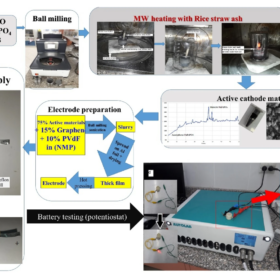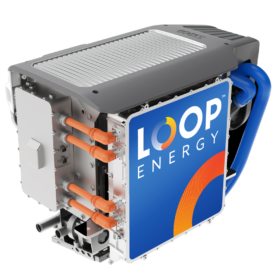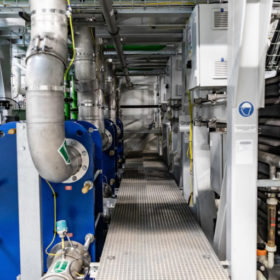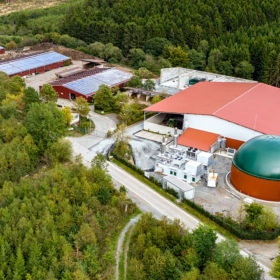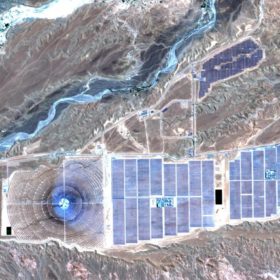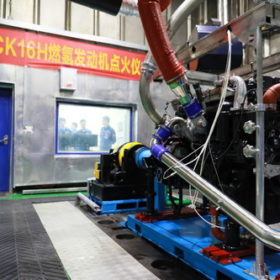Ultra-fast synthesis of nanocomposites for sodium ion batteries, supercapacitors
Researchers in Egypt have developed a synthesis method that uses the high microwave absorbance of silicon carbide content in rice straw ash and takes just 60 seconds to produce sodium iron phosphates-carbon nanocomposites (NaFePO4-C), which can be used as sodium ion battery cathodes and as symmetric supercapacitors.
The Hydrogen Stream: Canadian startup unveils 120 kW fuel cell system
In other news, Alstom tested its hydrogen train for long-distance transportation and the IEA released a report suggesting that hydrogen development may require an annual investment of around $60-130 billion through 2030.
The Hydrogen Stream: Siemens commissions 8.7 MW electrolyzer in Germany
As Siemens commissions Germany’s second largest electrolyzer at the Energy Park in Wunsiedel, Engie has taken the Final Investment Decision for a project in Western Australia, scheduled for completion in 2024. Meanwhile, two reports shed light on the future of green hydrogen: on the demand side, the MENA region could use it to become the global leader of green steel; on the supply side, BNEF welcomes the support commitments coming from Europe and the United States.
The case for residential, commercial Battery Energy Storage Systems in the MENA region
In this pv magazine Webinar, together with our partner JinkoSolar we will present energy storage solutions and some business cases for the MENA regions while discussing how projects may be conceived under local government policies and programs.
What ultra-powerful string inverters mean for utility-scale and EPCs
String inverters continue to grow in capacity to support the growing size and output of high-power and high-current PV modules becoming more normal at utility-scale. And that’s changing the equation for LCOE, at a critical growth point in the solar industry. In this pv magazine Webinar, we’ll hear from Sungrow about its new maximum-power three-phase 352kVA utility string inverter, the SG350HX, and discuss availability, certifications, and how LCOE is affected.
Demonstrating durability in n-type modules
The promises of a longer lifetime and better performance under harsh conditions, such as desert heat, are among the key reasons the PV industry is beginning to make the switch to n-type technologies. While the cell technologies themselves are a major factor, there’s a whole lot more to think about when it comes to ensuring long-term reliability for modules in the field. In this pv magazine Webinar, we examine the joint roles of advanced cell technology and proven bill of materials in ensuring reliability as expected lifetimes for PV modules move to 30 years and beyond.
The Hydrogen Stream: $8 billion green hydrogen facility near the Suez Canal
Egypt is taking several steps to support renewable and hydrogen projects, aiming to produce 42% of its electricity from renewable sources by 2030. Meanwhile, a team of researchers led by UCLA developed a method for predicting platinum alloys’ potency and stability; Iberdrola and bp are working on strategic collaboration, including large-scale green hydrogen production hubs in Spain, Portugal and the UK.
Photovoltaics and anaerobic digestion
Researchers in Egypt have studied the use of solar power and anaerobic digestion for a 6,300-square-meter farm capable of housing 200 head of milk/beef cattle. They found that this combination could achieve a cost of energy of $0.0226/kWh.
Morocco launches EPC tender for 260 MW of solar
The Moroccan Agency for Sustainable Energy is seeking EPC contractors for the construction of seven solar parks located across several regions.
The Hydrogen Stream: Ignited hydrogen-fueled engine from China
Machinery company Yuchai expects mass production by the end of 2022, targeting tractors and other heavy commercial vehicles in mountainous or plateau areas. Sunfire is installing a 2.6 MW high-temperature electrolyzer at Neste’s renewable products refinery in Rotterdam, with commissioning expected in early 2023. Meanwhile, hydrogen-based projects in the mobility and transportation sectors are taking off in France, Czech Republic, and the UK.
